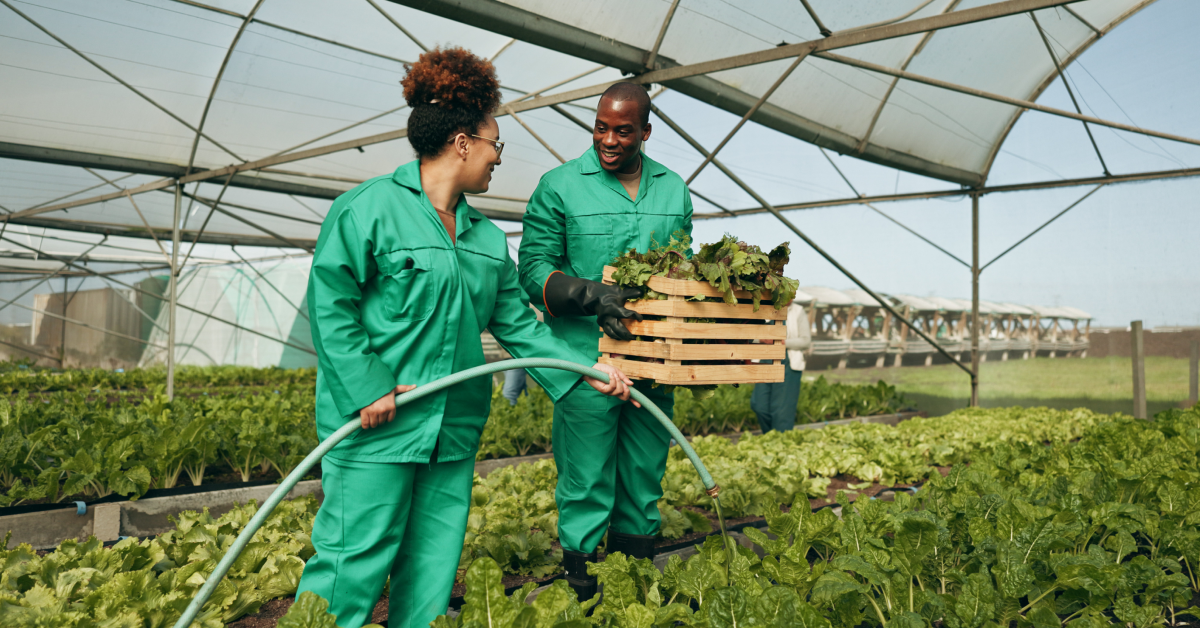Have you ever wondered about the different types of agriculture and their pros and cons? Let’s delve into this fascinating topic!
Agriculture, the bedrock of human civilization, is far more complex than meets the eye. Beyond the simple act of growing crops and raising livestock, it encompasses diverse practices, each with its own advantages and challenges.
From the vast, mechanized fields of commercial agriculture to the small-scale subsistence farms supporting rural communities, the world of farming is multifaceted. It’s a system that feeds billions and shapes economies, cultures, and environments.
What is Agriculture?
Agriculture is the cornerstone of human civilization. It is a complex interplay of science, art, and practice dedicated to cultivating the earth, producing sustenance, and raising livestock.
It’s the foundation upon which societies have risen, economies have flourished, and cultures have thrived. At its core, agriculture is about harnessing nature’s potential. It involves carefully managing soil, water, and living organisms to produce food, fiber, fuel, and other valuable products.
From the humble task of sowing a seed to the intricate balance of ecosystems, agriculture is a delicate dance between human ingenuity and natural processes.
Importance
The importance of agriculture cannot be overstated. It is the lifeblood of our planet, ensuring food security for billions of people. Without agriculture, our world would be vastly different and far more challenging.
It provides the raw materials for countless industries, from textiles to pharmaceuticals. Furthermore, agriculture is a significant economic driver, creating jobs and contributing to national GDPs.
Agriculture has been the catalyst for monumental shifts in human society throughout history. The transition from hunter-gatherer existence to settled agricultural communities marked a turning point, enabling the development of complex civilizations.
Today, agriculture continues to shape our world, influencing everything from environmental initiatives to innovative programs like planting memorial trees from Trees For a Change, which promote sustainability and honor loved ones. Its future will undoubtedly influence the course of humanity for generations to come.
Types of Agriculture
Agriculture, a cornerstone of human civilization, has evolved significantly, giving rise to diverse practices tailored to different environments, cultures, and technological advancements like crop management softwares. Let’s delve into the various types of agriculture, exploring their methods, benefits, and challenges.
Traditional Agriculture
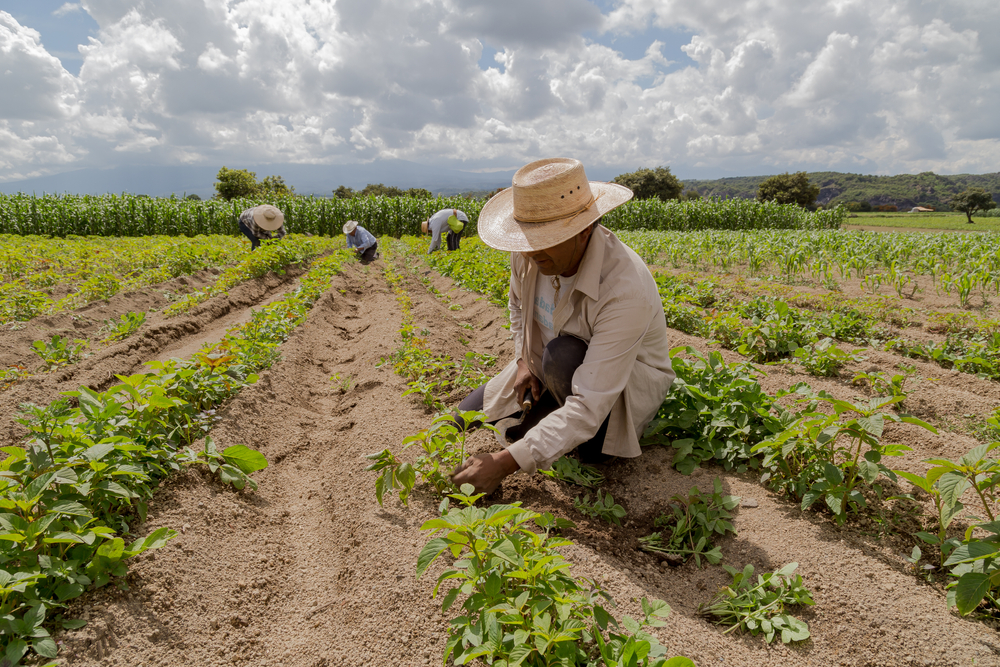
Traditional agriculture, often synonymous with subsistence farming, is rooted in centuries-old practices passed down through generations. It is one of the types of agriculture that relies heavily on manual labor, animal power, and natural resources.
Methods and Practices
Traditional agriculture encompasses several time-honored techniques:
- Crop Rotation: Alternating different crops in the same field each season to maintain soil fertility and control pests.
- Intercropping: Practice of growing multiple crops in the same area simultaneously to improve yields and reduce the risk of crop failure.
- Natural Fertilizers: Using organic materials like manure and compost to enrich the soil, promoting healthy plant growth.
Crops Grown
The choice of crops in traditional agriculture depends on regional climate and soil conditions. Commonly cultivated staples include rice, wheat, corn, and millet. These crops are essential for local food security and nutritional needs.
Pros
- Sustainability: Traditional methods often promote long-term soil health and ecosystem balance.
- Low environmental impact: Minimal use of chemical inputs reduces pollution.
Cons
- Labor-intensive: Requires significant human effort.
- Lower yields: Compared to modern methods, production levels are generally lower.
Industrial Agriculture

Industrial agriculture, also known as conventional or large-scale farming, is one of the types of agriculture that emerged in the mid-20th century with the advent of mechanization, chemical fertilizers, and pesticides. Its focus is on maximizing yield and efficiency.
Techniques Used
Industrial agriculture employs several vital techniques:
- Heavy Machinery: Large-scale tractors, harvesters, and other machinery are used to plant, tend, and harvest crops efficiently, reducing labor costs and increasing production speed.
- Irrigation Systems: Advanced irrigation methods, such as drip and center pivot systems, ensure consistent crop water supply, improving yields and reducing water waste.
- Genetically Modified Organisms (GMOs): GMOs are engineered to enhance crop traits such as resistance to pests, diseases, and herbicides, as well as improve yield and resilience.
Crops Grown and Livestock
- Monoculture: Industrial agriculture often involves growing large quantities of a single crop, such as corn, soybeans, or wheat, which simplifies management and maximizes efficiency.
- Livestock: Animals are typically confined in large-scale operations known as Concentrated Animal Feeding Operations (CAFOs), where they are raised for meat, dairy, or eggs in high-density environments.
Pros
- High yields and efficiency: Produces large quantities of food at lower costs.
- Supports large-scale food production: Feeds growing populations.
Cons
- Environmental degradation: Soil erosion, water pollution, and biodiversity loss are common issues.
- High use of chemical inputs: Can harm human health and the environment.
Organic Agriculture

Organic agriculture is one of the types of agriculture that emphasizes sustainable farming methods that minimize the use of synthetic inputs. It prioritizes soil health, biodiversity, and animal welfare.
Principles
Organic agriculture adheres to several foundational principles:
- Rotations: Regularly changing the types of crops grown in each field to enhance soil fertility and reduce pest and disease pressures.
- Cover Crops: Planting crops such as clover or vetch between main crops to protect and enrich the soil.
- Compost: Using organic matter improves soil structure, fertility, and microbial activity.
Certification Standards
To be certified organic, farms must comply with strict guidelines established by certification bodies. These standards ensure that the farm uses approved practices and inputs, such as organic fertilizers and pest control methods, and does not rely on synthetic chemicals or genetically modified organisms (GMOs).
Practices and Techniques
Organic farmers employ a variety of methods to promote sustainability:
- Biological Pest Control: Utilizing natural predators and parasites to manage pest populations, reducing the need for synthetic pesticides.
- Crop Rotation: Alternating crops in different fields to enhance soil health and break pest and disease cycles.
- Animal Manures: Using manure from livestock as a natural fertilizer to nourish crops and improve soil structure.
Pros
- Healthier food products: Reduced exposure to harmful chemicals.
- Reduced chemical usage: Benefits the environment.
Cons
- Higher cost for consumers: Production costs are often higher.
- Lower yields: Compared to conventional methods, yields can be lower.
Urban Agriculture

Urban agriculture involves cultivating food in cities and towns. It is one of the types of agriculture that aims to improve food security, enhance local economies, and create green spaces.
Forms of Urban Farming
Urban agriculture comes in various forms, each suited to different urban settings:
- Rooftop Gardens: These use the roofs of buildings to grow vegetables, herbs, and sometimes even small fruits. They use otherwise unused space and can help mitigate urban heat islands.
- Community Gardens: These are shared plots of land where residents grow food together. They foster community spirit and give urban dwellers access to fresh produce.
- Indoor Farming: Cultivating food inside buildings using hydroponics or vertical farming techniques. Indoor farms. They can operate year-round and are protected from external weather conditions.
Pros
- Access to fresh produce: Provides healthy food options for urban residents.
- Utilizes unused spaces: Converts underutilized areas into productive spaces.
Cons
- Limited space and scalability: Challenges in expanding production.
- Potential contamination issues: Exposure to urban pollutants.
Permaculture
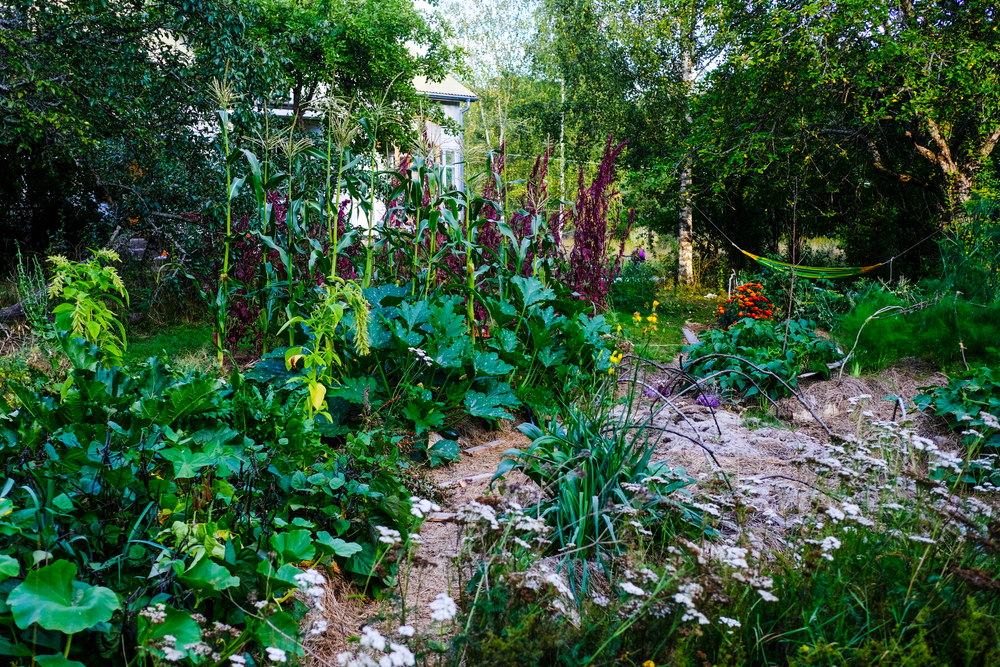
Permaculture is a design system based on natural patterns. It is one of the types of agriculture that seeks to create sustainable human settlements by integrating landscape, people, and other elements.
Principles and Design
Permaculture emphasizes several core principles:
- Observation: Understanding and working with natural processes and patterns to design efficient and sustainable systems.
- Resource Efficiency: Maximizing available resources and minimizing waste through careful planning and design.
- Ecosystem Mimicry: Creating systems that emulate natural ecosystems, promoting biodiversity and resilience.
Implementation Methods
Permaculture can be applied in various aspects of life and land management, including:
- Food Production: Utilizing techniques such as companion planting, polycultures, and permaculture gardens to grow food in a way that supports ecosystem health.
- Water Management: Designing systems like rain gardens, swales, and greywater recycling to manage and conserve water effectively.
- Energy Efficiency: Reducing energy consumption and dependence by incorporating passive solar design, natural heating and cooling, and renewable energy sources.
Pros
- Sustainable and self-sufficient systems: Reduces reliance on external inputs.
- Enhances biodiversity: Creates thriving ecosystems.
Cons
- Requires extensive planning and knowledge: Implementation can be complex.
- Initial setup can be resource-intensive: Requires significant investment.
Biodynamic Agriculture
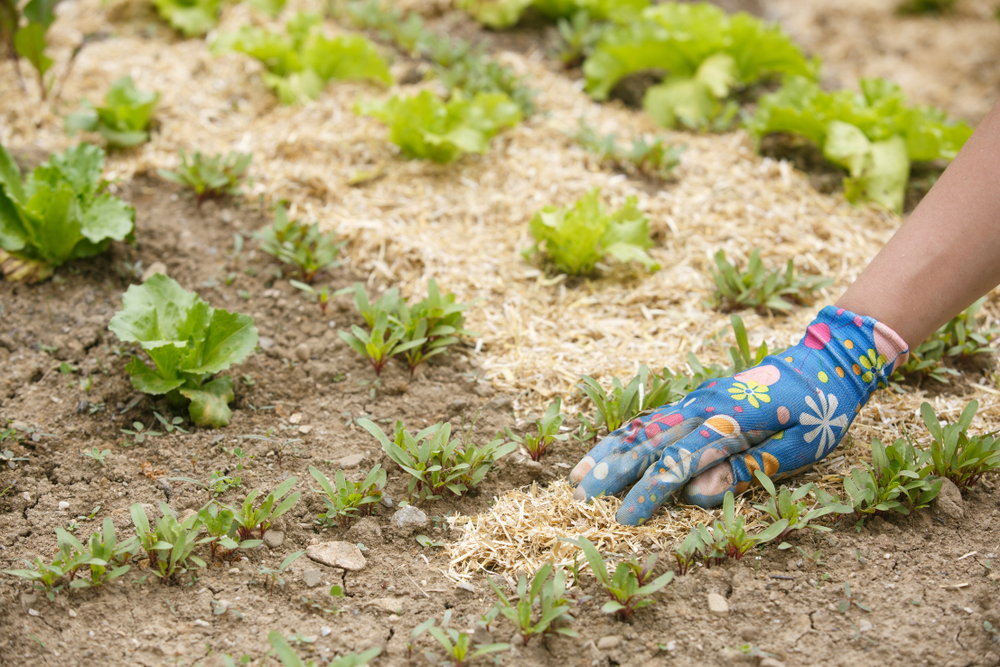
Biodynamic agriculture is a spiritual and ecological approach to farming that treats the farm as a living organism. It is one of the types of agriculture that emphasizes holistic management and the importance of cosmic influences.
Principles and Practices
Biodynamic agriculture involves several vital principles and practices:
- Biodynamic Preparations: Special composts and field sprays from fermented herbs, minerals, and animal manures enhance soil and plant health.
- Crop Rotations: This practice helps maintain soil fertility and control pests and diseases by alternating the types of crops grown in each field.
- Animal Husbandry: Integrating livestock into the farming system supports nutrient cycling and soil fertility, as animals provide manure and other benefits.
Certification
To obtain biodynamic certification, farmers must adhere to strict guidelines that ensure their practices align with biodynamic farming principles. This certification verifies the farm’s commitment to ecological balance and holistic management.
Pros
- A holistic approach to farming: Considers the farm as a complete ecosystem.
- Promotes ecological balance: Enhances soil health and biodiversity.
Cons
- Seen as less scientific: Some practices are based on spiritual beliefs.
- Can be labor-intensive: Requires careful observation and attention.
Agroforestry

Agroforestry combines trees with crops and livestock on the same land. It is one of the types of agriculture that offers multiple benefits, including environmental, economic, and social advantages.
Types of Agroforestry
- Silvopasture: It involves integrating trees with livestock grazing areas, creating a system where animals benefit from the shade and protection of trees while trees gain from the nutrient cycling facilitated by livestock.
- Alley Cropping: In this system, rows of trees are planted between crops. The trees can provide windbreaks, improve soil health, and offer additional income from products like timber or fruits.
Pros
- Enhances soil fertility: Tree roots improve soil structure and nutrient cycling.
- Provides additional income sources: Timber, fruits, and livestock products can be generated.
Cons
- Long-term commitment: Establishing agroforestry systems takes time.
- Requires specialized knowledge: Understanding tree-crop interactions is essential.
Aquaculture
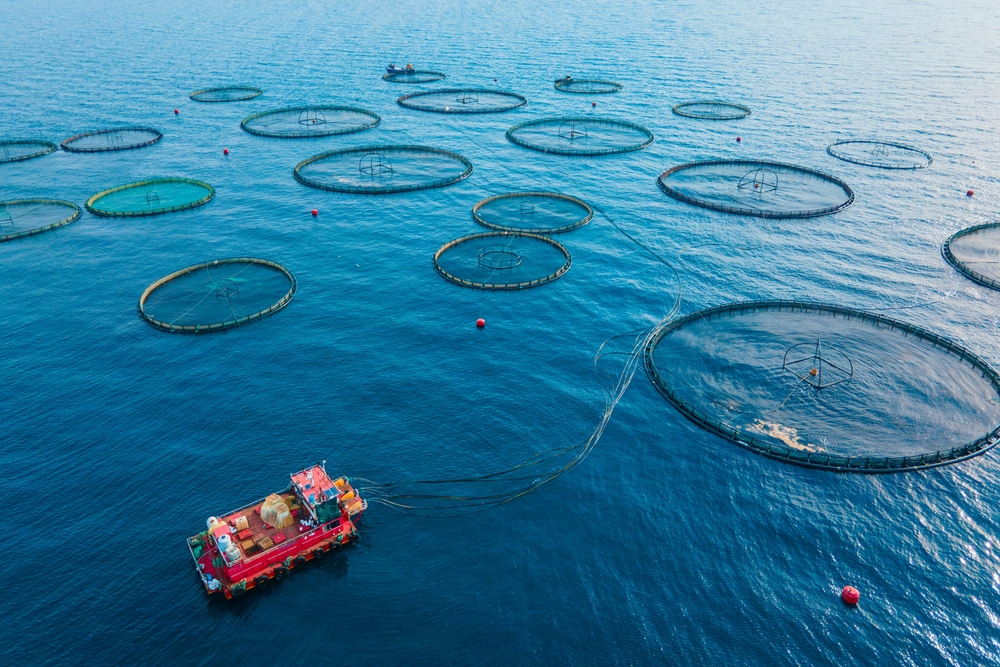
Aquaculture involves farming aquatic organisms such as fish, shellfish, and algae. It is one of the types of agriculture that is a growing sector that addresses the increasing demand for seafood.
Types of Aquaculture
Aquaculture can be conducted in both freshwater and marine environments. Freshwater aquaculture involves cultivating species in inland ponds, rivers, and lakes, while marine aquaculture takes place in coastal areas and the open ocean, utilizing pens, cages, and other structures.
Pros
- Efficient protein production: High yields can be achieved in a small area.
- Can reduce overfishing: Helps protect wild fish populations.
Cons
- Environmental concerns: Waste management and disease outbreaks can impact water quality.
- Disease management: Requires careful monitoring and prevention.
Precision Agriculture

Precision agriculture uses technology to optimize agricultural practices. It involves collecting and analyzing data to make informed decisions.
Tools and Techniques
Precision agriculture employs various advanced tools and techniques to gather information. Technologies such as GPS (Global Positioning System), GIS (Geographic Information System), drones, and sensors are integral to this method, providing valuable data on soil conditions, crop health, weather patterns, and more.
Pros
- Increased efficiency and yields: Optimizes resource use and maximizes production.
- Data-driven decision making: Enables precise application of inputs.
Cons
- High initial investment: Technology and equipment can be expensive.
- Requires technical expertise: Skilled operators are needed to manage data.
Vertical Farming

Vertical farming involves cultivating crops in stacked layers within controlled environments, such as warehouses or skyscrapers. It’s one of the types of agriculture that aims to maximize production in limited spaces.
Techniques and Systems
In vertical farming, crops are grown using innovative techniques like hydroponics, where plants are nurtured in nutrient-rich water, and aeroponics, where plants are grown in an air or mist environment.
These methods eliminate the need for soil, allowing more efficient use of space and resources.
Pros
- Space-efficient: Produces high yields in small areas.
- Year-round production: Independent of climate conditions.
Cons
- High energy consumption: Lighting and climate control require significant energy.
- Significant setup costs: Initial investment in infrastructure is high.
Conclusion
Agriculture has evolved significantly, from traditional methods to cutting-edge technologies. We’ve explored diverse types of agriculture and practices like industrial, organic, and urban farming, each with its strengths and weaknesses.
While industrial agriculture boasts high yields, it often compromises environmental health. Conversely, organic farming prioritizes sustainability but might have lower productivity. Urban agriculture addresses food access in cities, while permaculture and biodynamic approaches seek holistic harmony.
The future of agriculture is promising, with innovations like precision agriculture, vertical farming, and biotechnology at the forefront. These advancements aim to increase yields, conserve resources, and ensure food security in a changing world.
As we move forward, balancing productivity, sustainability, and equity will be crucial for the global food system.
FAQs
What Are the Types of Agriculture?
Agriculture includes various methods. Traditional farming relies on manual labor and natural resources. Industrial agriculture uses technology and chemicals for large-scale production. Other types of agriculture include organic, urban, permaculture, and more specialized forms like aquaculture and vertical farming.
What Are the Six Sectors of Agriculture?
Agriculture comprises several sectors. Crop production and livestock rearing are primary. Forestry, fisheries, and agricultural services support these core activities. Agro-processing converts raw farm products into finished goods.
What Are the Benefits of Agriculture?
Agriculture is crucial for human life. It provides food, supports economies, and supplies raw materials. Sustainable practices can also benefit the environment.
Which of the Following Types of Agriculture is Used Most Widely Throughout the World?
Industrial agriculture dominates global food production due to its focus on high yields. However, there’s a growing shift towards more sustainable methods.
What Distinguishes Organic Agriculture From Other Types of Sustainable Agriculture?
Organic agriculture has strict standards and a complete ban on synthetic inputs. It prioritizes soil health and natural processes, differentiating it from other sustainable approaches.
Why Was Agriculture Important to the Development of Civilization?
Agriculture transformed human society. It allowed people to settle, produce surplus food, and develop complex civilizations. This shift led to advancements in technology and social structures.

